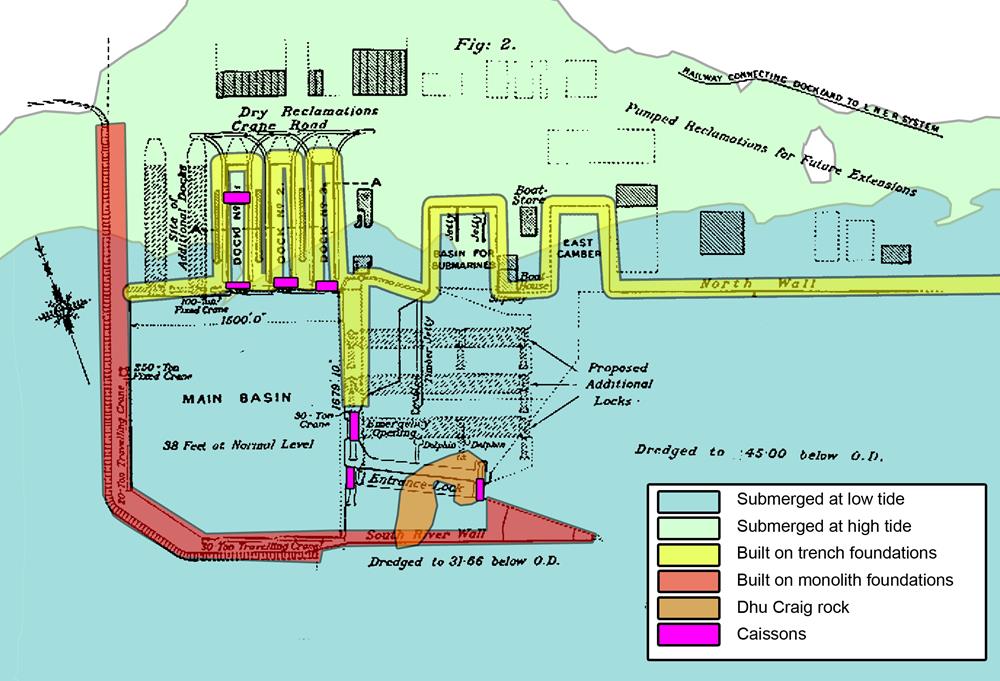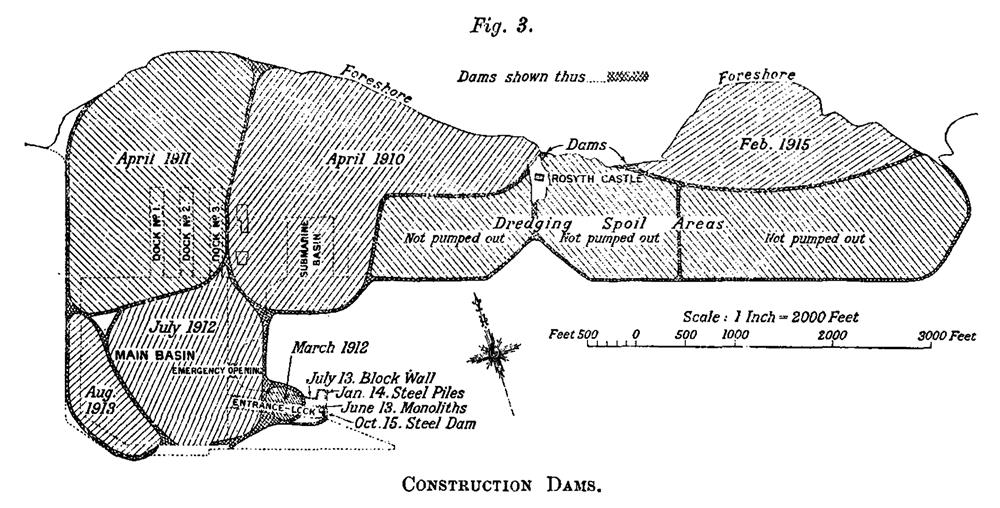6 – 1909 Awarding the construction contracts
| < 5 – 1906 Surveying the site | Δ Index | 7 – 1910 The Submarine Basin > |
The building work was allocated as several separate contracts. These were interlinked into an overall master plan for the entire project.
| Main Works – seawalls, piers, docks: | Easton Gibb & Son |
| Caissons and basin sluices: | Sir William Arrol & Company |
| Penstocks and basin sluice-machinery: | Sir W. G. Armstrong, Whitworth & Company |
| Approach channel dredging: | Messrs. Topham, Jones & Railton |
The Main Works were divided into three phases: the tidal submarine basin; the inner basin with three graving dry docks (dry docks); and the entrance lock and emergency exit from the inner basin.
Construction challenges

Construction challenges.
Most of the site is submerged at low tide, and the entire site is submerged at low tide.
The south and west sea-walls were built on concrete monolith foundations.
All other seawalls, including the graving docks and submarine basin were built in trench foundations.
The solid foundation of the Entrance Lock was created by blasting a channel through Dhu Craig rock.
The Caissons were built by William Arrol and Co.; four at Rosyth and four at North Queensferry.
At the outset, Easton and Gibb’s civil engineers disagreed with the Admiralty over the parts of the contracts. In particular over the practicalities of some specified techniques, and some of the design specifications.
The seawalls to the west and south were to be built on concrete monolith foundations – massive piles sunk into the sea bed. The foundations for all of the other walls would be formed in trenches dug into the seabed. The foundation for the entrance dock was blasted out of Dhu Craig rock.
The foundations for the south and west walls of the basin were to be built by driving concrete monoliths into the seabed. Once all of the walls were completed, the inner basin would be pumped out and excavated to the required depth.
The Admiralty contract specified that it was not allowed to surround the whole site with a coffer dam. Temporary clay dams were allowed for the excavation of foundations for the north and east walls of the inner basin, the adjoining submarine basin, and the entrance lock.
As the project proceeded, it was realized that the building the monolith foundations was too slow, so a compromise was agreed with additional temporary clay dams being formed to speed up the process and avoid any delay in the completion of the overall project.

This diagram shows the successive areas enclosed by temporary dams, and the date when each was pumped out.
(In 1927, Alexander Gibb said that he thought that rather than driving in monoliths to form the foundations of the seawall, it would have been quicker to surround the whole site with a coffer dam, then to dig trench foundations in the seabed to support the seawall.)
| < 5 – 1906 Surveying the site | Δ Index | 7 – 1910 The Submarine Basin > |
top of page
